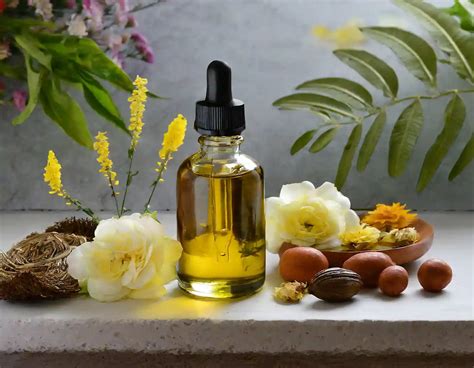Essential oils, with their potent aromatic and therapeutic properties, have gained immense popularity for various applications. However, using them directly on the skin can cause irritation or sensitization. That’s where carrier oils come into play, acting as a safe and effective medium for diluting essential oils without compromising their benefits.

What are Carrier Oils?
Carrier oils are vegetable oils or plant-based emollients that are devoid of any strong aroma or therapeutic effects. They serve as a base for diluting essential oils, ensuring their safe topical application while preserving their therapeutic benefits.
Choosing the Right Carrier Oil
Selecting the ideal carrier oil depends on several factors, including skin type, desired absorption rate, and the specific essential oils being used. Some popular options include:
1. Argan Oil: Rich in antioxidants and vitamins, argan oil is suitable for all skin types, especially dry or mature skin.
2. Avocado Oil: A deeply moisturizing oil with anti-inflammatory properties, making it excellent for sensitive or eczema-prone skin.
3. Coconut Oil: Solid at room temperature, coconut oil is a versatile carrier oil known for its antimicrobial and moisturizing effects.
4. Grapeseed Oil: Lightweight and non-comedogenic, grapeseed oil is ideal for oily or acne-prone skin.
5. Jojoba Oil: Similar to human sebum, jojoba oil is a non-greasy option suitable for all skin types, especially oily or acne-prone skin.
Benefits of Using Carrier Oils
- Safe and effective: Carrier oils prevent skin irritation or sensitization caused by the direct application of essential oils.
- Enhance absorption: Carrier oils facilitate the absorption of essential oils through the skin, maximizing their therapeutic effects.
- Nourish the skin: Many carrier oils contain essential fatty acids and vitamins that nourish and moisturize the skin.
- Extend shelf life: Carrier oils can prolong the shelf life of essential oils by protecting them from oxidation and evaporation.
Common Mistakes to Avoid
- Using pure essential oils: Never apply essential oils directly to the skin. They must always be diluted in a carrier oil.
- Exceeding the recommended dilution ratio: Follow the recommended dilution ratios to avoid skin irritation or sensitization.
- Ignoring skin sensitivity: Patch test the diluted essential oil mixture on a small area of skin before applying it to larger areas.
- Using expired carrier oils: Ensure that the carrier oil you use is fresh and not expired to maintain its effectiveness and avoid potential skin reactions.
How to Make Essential Oil Blends
Creating essential oil blends is an art that allows you to tailor specific therapeutic effects for various applications. Here’s a step-by-step guide:
- Choose your carrier oil: Start by selecting a carrier oil that aligns with your skin type and desired absorption rate.
- Determine the desired dilution ratio: Refer to the specific essential oil bottle or a reputable source to determine the recommended dilution ratio for topical application.
- Calculate the number of drops: Based on the desired dilution ratio and the amount of carrier oil you’re using, calculate the number of essential oil drops needed.
- Combine the ingredients: Add the essential oil drops to the carrier oil and mix thoroughly using a glass dropper or stirrer.
- Patch test: Before applying the blend to a larger area of skin, conduct a patch test on a small area to check for any reactions.
Useful Applications of Essential Oils
- Aromatherapy: Diffusing essential oils in the air promotes relaxation, sleep, and respiratory health.
- Topical application: Diluted essential oils applied to the skin can soothe muscle pain, reduce inflammation, and improve skin health.
- Massage therapy: Adding a few drops of essential oils to a massage oil enhances relaxation and offers specific therapeutic benefits.
- Bath therapy: A few drops of essential oils added to a warm bath create a spa-like experience and promote relaxation and detoxification.
- Natural cleaning: Essential oils can be incorporated into cleaning solutions to disinfect surfaces, freshen the air, and deter insects.
Creative New Word: “Aromatherapy”
Aromatherapy is the practice of using essential oils for therapeutic purposes through various methods such as inhalation, topical application, and massage.
Frequently Asked Questions
1. What is the recommended dilution ratio for topical application of essential oils?
The recommended dilution ratio varies depending on the essential oil. Refer to the specific essential oil bottle or a reputable source for guidance.
2. Can I apply undiluted essential oils to my skin?
No, never apply undiluted essential oils directly to the skin as they can cause irritation or sensitization. Always dilute them in a carrier oil.
3. How long do I need to patch test an essential oil blend before applying it to a larger area?
Wait 24 hours after applying the blend to a small area of skin to ensure there are no negative reactions before using it on a larger area.
4. What carrier oil is best for sensitive skin?
Aloe vera oil, argan oil, and jojoba oil are excellent options for sensitive skin due to their calming and hypoallergenic properties.
5. Can I use essential oils to treat medical conditions?
While essential oils have therapeutic properties, they should not be solely relied upon for treating medical conditions. Consult a healthcare professional before using essential oils for medicinal purposes.
6. Are all essential oils safe for pregnant women?
Certain essential oils may be harmful to pregnant women. Always consult with a healthcare professional before using essential oils during pregnancy or breastfeeding.
7. Can essential oils be used on pets?
Some essential oils can be toxic to pets. Before using essential oils on pets, consult with a veterinarian to ensure their safety.
8. How can I tell if an essential oil is pure?
Look for essential oils that are 100% pure, therapeutic-grade, and labeled with specific botanical names. Avoid any blends or synthetic oils.
